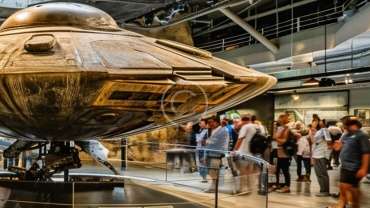From the moment it was founded in 1947, Ayetoro was more than a settlement; it was a vision. Built on the edge of the Atlantic, where marshland met open sea, the community adapted to an environment that demanded both creativity and resilience. In a town where water was everywhere—beneath homes, between courtyards, and along the streets—bridges became not just practical pathways, but enduring symbols of unity in the Happy City.
The first generations of settlers quickly understood that connection was essential. Families built their homes on stilts, raising wooden structures above the tide, but without bridges, neighbours remained isolated pockets. It was impossible to move freely, share meals, or gather for worship. So, using timber sourced from the surrounding forest and the collective labour of men, women, and children, Ayetoro’s first bridges were built. Narrow yet strong, they linked clusters of houses into streets, and streets into a community.
Archival photographs from the 1950s show children running across wooden planks, mothers balancing baskets as they walked, and fishermen returning at dusk with nets slung over their shoulders. Oral testimonies describe how neighbours would pause on these bridges to exchange greetings, settle disputes, or sing hymns before heading to evening service. The bridges became places of meeting, where everyday life unfolded above the water’s surface.
As the town grew, so did its bridges. Some were short crossings over narrow inlets, while others stretched longer, connecting entire neighbourhoods across canals. Their construction was a communal affair. The Apostles would announce a building day, and households turned out together. Young men carried timber, older men hammered nails, while women prepared food and sang songs to keep the workers’ spirits high. The act of building was itself a ritual of togetherness.
The bridges also reflected Ayetoro’s unique blend of spirituality and practicality. For the Apostles, they were not only structures of wood, but signs of divine order: each bridge a reminder that no one should be left alone, and that paths must always be made between people. Children learned this lesson early as they played on the bridges, their laughter echoing over the water.
In the 1960s, when visitors arrived from Lagos and abroad, they marvelled at these networks of wooden walkways. To outsiders, the bridges gave the town a resemblance to Venice or Amsterdam, earning it the nickname “Small London.” But to the people of Ayetoro, they were simply a way of life—unremarkable in their necessity, yet extraordinary in their meaning.

Today, many of those original bridges have been lost to erosion and rising seas. Yet their memory endures in the stories of elders who recall how, in the Happy City, you could cross from one end to the other without ever touching the ground. To them, the bridges remain a metaphor for Ayetoro’s greatest achievement: the ability to link lives together, across waters and through generations.
As one elder once said, “The bridges taught us that we are never alone. In Ayetoro, there was always a way to reach your neighbour.”




